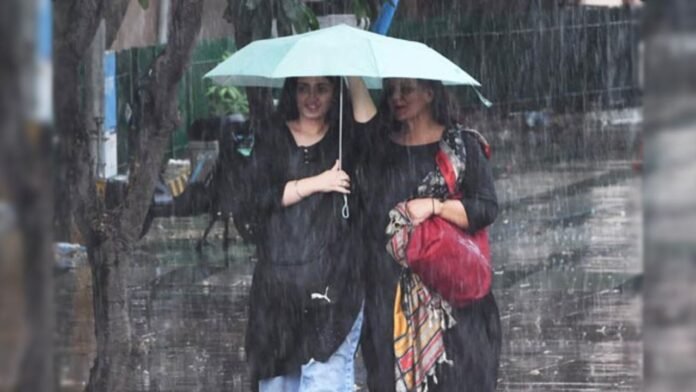Due to heavy rains, the monsoon season in Pakistan has turned many areas into waterlogged regions. The current downpours rank among the most intense ever recorded. Widespread rain batters large cities and rural areas, causing massive disruptions to life.
Twin cities were brought to a halt Monsoon Rains
Rawalpindi and Islamabad – known as twin cities – have seen recent heavy rains wreak havoc on them. Severe showers caused tremendous volumes of water flow on major streets across both urban areas, resulting in traffic coming to a standstill.
Various parts of Rawalpindi reported power outages as floodwater inundated electricity substations, compounding problems for citizens already struggling with the flooding outside their homes.
Landslide fears around Islamabad Monsoon Rains
Authorities in hilly areas around Islamabad were concerned that the persistent heavy rainfall could trigger landslides. Police issued warnings urging people in vulnerable locations to take precautions and avoid unnecessary travel during expected peak times for landslip risk.
Rural communities suffer, too. Monsoon Rains
Smaller cities and rural regions have yet to escape the impact of this year’s monsoon rains. Heavy downpours in towns such as Narowal, Pattoki, and Minchinabad transformed streets into ponds, preventing daily life.
Agricultural activities have been heavily disrupted in rural areas, where fields have been left underwater following the downpours. Farmers now worry about the impact on crops and what this could mean for their livelihoods.
Mixed weather in Karachi: Monsoon Rains
Karachi, Pakistan’s largest city, has experienced light and heavy rain during the monsoon season. While residents welcomed the relief from searing summer temperatures that light showers brought, heavier rain led to waterlogging in some parts of the city and severe traffic congestion elsewhere.
Rivers and streams outside Karachi, such as Haripur, swelled rapidly after heavy rain. Flooding followed in nearby low-lying areas as residents battled rising water levels. Authorities warned people against crossing rivers or streams during the monsoon season because flash floods posed a significant safety risk.
Exclusive Suggestions for Travelers Who Visit Murree
The Chief Traffic Officer (CTO) of Murree, Benish Fatima, underscored some precautions tourists should take when visiting any hill station.
Visitors must carry valid driving licenses and fitness certificates for public service vehicles. Authorities have strictly enforced SOPs for the entry of heavy transport vehicles into Murree city and advised tourists to check their vehicles’ conditions, especially ensuring wipers and lights are in proper working order for a safe drive during rain.
Safety Tips While Driving in Murree
Driving in Murree during the rainy season can be difficult due to slippery roads and sharp turns that can be dangerous at times. Travelers should be careful not to overspend or overtake other vehicles unnecessarily. Since the roads are all two-way, creating a double lane on any road must be avoided, as it may result in traffic jams, which can lead to accidents, too, because of the limited width of these hilly areas’ highways.
Fatima asked them not to park cars on roadsides to take photographs since this practice hampers the smooth flow of traffic; therefore, instead of such a situation arising, she suggested cooperating with wardens deployed on highway shoulders along police officers posted there from the district level who work under her command as well as the direction in managing an uninterrupted flow throughout different points across her jurisdiction including those within vicinity nearest approachable routes connecting neighboring districts even provinces beyond national frontiers if the situation demands so through international boundaries falling under their purview while handling influx caused due tourists’ rush towards scenic spots located nearby this administrative headquarters regionally popularly known among masses.


